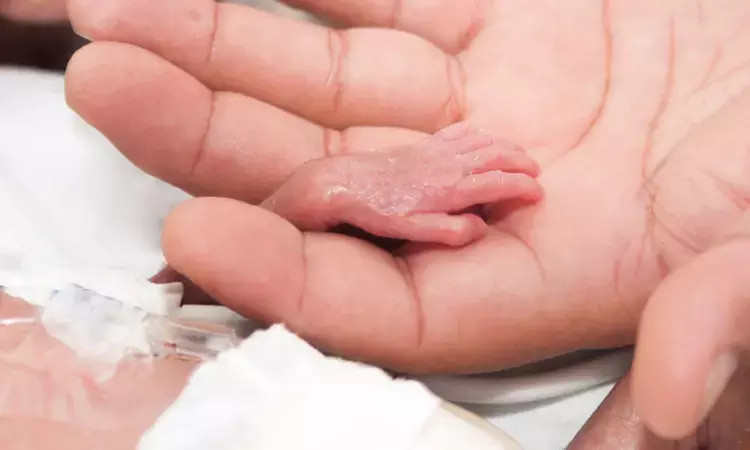- Home
- Medical news & Guidelines
- Anesthesiology
- Cardiology and CTVS
- Critical Care
- Dentistry
- Dermatology
- Diabetes and Endocrinology
- ENT
- Gastroenterology
- Medicine
- Nephrology
- Neurology
- Obstretics-Gynaecology
- Oncology
- Ophthalmology
- Orthopaedics
- Pediatrics-Neonatology
- Psychiatry
- Pulmonology
- Radiology
- Surgery
- Urology
- Laboratory Medicine
- Diet
- Nursing
- Paramedical
- Physiotherapy
- Health news
- Fact Check
- Bone Health Fact Check
- Brain Health Fact Check
- Cancer Related Fact Check
- Child Care Fact Check
- Dental and oral health fact check
- Diabetes and metabolic health fact check
- Diet and Nutrition Fact Check
- Eye and ENT Care Fact Check
- Fitness fact check
- Gut health fact check
- Heart health fact check
- Kidney health fact check
- Medical education fact check
- Men's health fact check
- Respiratory fact check
- Skin and hair care fact check
- Vaccine and Immunization fact check
- Women's health fact check
- AYUSH
- State News
- Andaman and Nicobar Islands
- Andhra Pradesh
- Arunachal Pradesh
- Assam
- Bihar
- Chandigarh
- Chattisgarh
- Dadra and Nagar Haveli
- Daman and Diu
- Delhi
- Goa
- Gujarat
- Haryana
- Himachal Pradesh
- Jammu & Kashmir
- Jharkhand
- Karnataka
- Kerala
- Ladakh
- Lakshadweep
- Madhya Pradesh
- Maharashtra
- Manipur
- Meghalaya
- Mizoram
- Nagaland
- Odisha
- Puducherry
- Punjab
- Rajasthan
- Sikkim
- Tamil Nadu
- Telangana
- Tripura
- Uttar Pradesh
- Uttrakhand
- West Bengal
- Medical Education
- Industry
Administration of less invasive surfactant reduces risk of adverse outcomes in preterm infants: JAMA.

A new investigation showed that less invasive surfactant administration reduces the risks of adverse outcomes in extremely preterm infants. The study was published in JAMA Network Open, 2022.
Less invasive surfactant administration (LISA) was found to be beneficial for respiratory outcomes in preterm infants. As the OPTIMIST trial found higher mortality rates in premature infants born at 25 to 26 weeks gestational age (GA) receiving surfactant treatment and spontaneously breathing, researchers from Germany, conducted a study to analyze the outcomes in LISA-exposed, highly vulnerable babies born at less than 27 weeks GA.
A large-scale observational cohort study was conducted by collecting data from 68 tertiary level neonatal intensive care units of the German Neonatal Network between April 1, 2009, and December 31, 2020. Premature Infants born between 22 weeks 0 days to 26 weeks 6 days of gestation were included in the study. Researchers compared the short-term outcomes among infants receiving LISA within the first 72 hours of life vs infants not receiving LISA. The primary outcomes of the measurement were LISA use rates, use of mechanical ventilation within the first 72 hours which was considered LISA failure, and the association of LISA with outcomes such as death from any cause, bronchopulmonary dysplasia (BPD), death, and BPD combined, pneumothorax, retinopathy of prematurity, intracerebral hemorrhage, and periventricular leukomalacia. Multivariate logistic regression models were used to address potential confounding factors.
Results:
- A total of 6542 infants were analyzed.
- Of these 3030 were female and 3512 were male with a mean GA of 25.3 (1.1) weeks and a mean birth weight of 715 [180] g.
- 2534 infants (38.7%) received LISA, which was most frequently given quasi-prophylactically during delivery room management.
- Among the infants who received LISA, 1357 (53.6%) did not require mechanical ventilation in the first 72 hours compared with 331 infants (8.3%) of 4008 who did not receive LISA.
- In a multivariate logistic regression model that adjusted for GA, small-for-GA status, sex, multiple births, inborn status, antenatal steroid use, and a maximum fraction of inspired oxygen in the first 12 hours of life, LISA was associated with reduced risks of all-cause death, BPD, and BPD or death compared with infants without LISA exposure.
Thus, the researchers concluded from this long-term multicenter cohort that LISA may be associated with reduced risks of adverse outcomes in extremely preterm infants.
For the full article, click here: 10.1001/jamanetworkopen.2022.25810
Härtel C, Herting E, Humberg A, et al. Association of Administration of Surfactant Using Less Invasive Methods With Outcomes in Extremely Preterm Infants Less Than 27 Weeks of Gestation. JAMA Netw Open. 2022;5(8):e2225810. Published 2022 Aug 1.
BDS, MDS
Dr.Niharika Harsha B (BDS,MDS) completed her BDS from Govt Dental College, Hyderabad and MDS from Dr.NTR University of health sciences(Now Kaloji Rao University). She has 4 years of private dental practice and worked for 2 years as Consultant Oral Radiologist at a Dental Imaging Centre in Hyderabad. She worked as Research Assistant and scientific writer in the development of Oral Anti cancer screening device with her seniors. She has a deep intriguing wish in writing highly engaging, captivating and informative medical content for a wider audience. She can be contacted at editorial@medicaldialogues.in.
Dr Kamal Kant Kohli-MBBS, DTCD- a chest specialist with more than 30 years of practice and a flair for writing clinical articles, Dr Kamal Kant Kohli joined Medical Dialogues as a Chief Editor of Medical News. Besides writing articles, as an editor, he proofreads and verifies all the medical content published on Medical Dialogues including those coming from journals, studies,medical conferences,guidelines etc. Email: drkohli@medicaldialogues.in. Contact no. 011-43720751




